To ‘merantau’, in the Indonesian language, means to leave the area where one had grown up, in order to seek out a living and/or acquire experience and knowledge. Practiced by various ethnic groups in Indonesia, it is especially evident among the Minangkabau ethnic group, in which it is customary that males aged between 20-30 years undertake such a journey. Although the pilot voyage ‘Across The Equator’ would be too short in duration to count as a typical merantau in the traditional sense, living on a boat and sailing through a part of the Indonesian archipelago on a schooner has allowed me the opportunity to experience, observe, and reflect on many issues, whether related to Southeast Asian Studies, or in a broader sense. This pilot voyage, with the opportunity of exploring the islands south of Batam through boat, has been a merantau to me. This report is structured into three areas comprising, first, activities related to Southeast Asian Studies conducted in relation to the pilot voyage, second, possible future projects in relation to Southeast Asian Studies, and third, my personal reflections on the pilot voyage.

Activities related to Southeast Asian Studies conducted in relation to the pilot voyage
Before proceeding, it would be useful to characterize what is meant by ‘Southeast Asian Studies’. In contrast to traditional disciplinary-based approaches, Southeast Asian Studies is characterized by an inter-disciplinary approach, drawing on different perspectives and methodologies from the humanities and social sciences, while emphasizing local experience, knowledge, and context. With this in mind, the activities related to Southeast Asian Studies conducted in relation to the pilot voyage can be classified into four categories, namely familiarization with socio-economic conditions, familiarization with historical and cultural aspects, communicating using the Indonesian language, and the significance of the seas in everyday life.
Familiarization with socio-economic conditions in Singapore’s immediate neighborhood
During the voyage, we had the opportunity to observe and interact with local communities at two places, namely at Daik town on Lingga island, and at the village on Gojong island (Figure 1).

We observed that several amenities were located in Daik town including the regent’s office, several mosques, shops and dining places, fuel kiosks, a community health centre, a market, a village unit cooperative, and several guesthouses (Figure 2). From our conversations, we learnt that there is a sizable Chinese community in Daik, of which the adults can speak Mandarin and some Chinese dialects, in addition to the Indonesian language (Bahasa Indonesia), but the school-going generation can only speak the Indonesian language. English was not taught at our interlocutor’s school. Some locals also spoke of a hollowing out of the population at Daik, with the young adults migrating to other places for work. We also observed some small plantation agriculture (Figure 3) along the roads we travelled. The houses fronting the Daik river were all supported by on stilts (Figure 4), as were some of the houses inland.

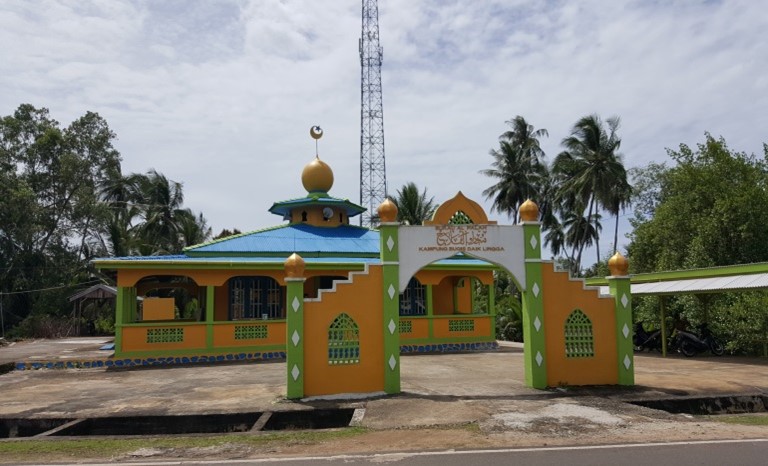
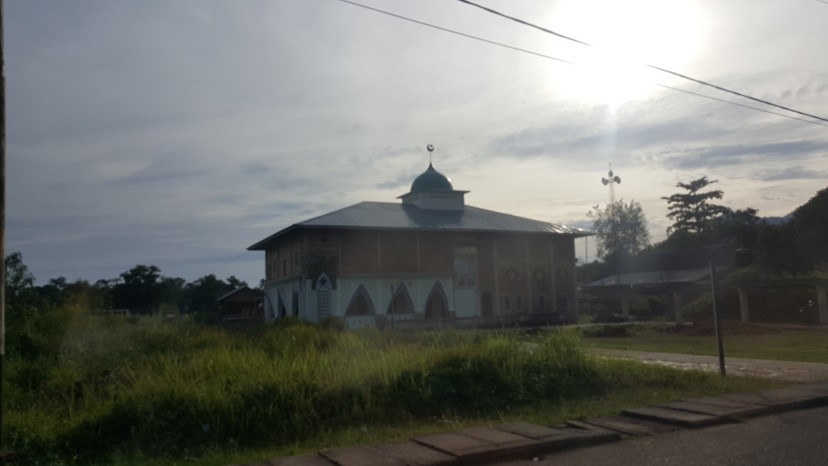
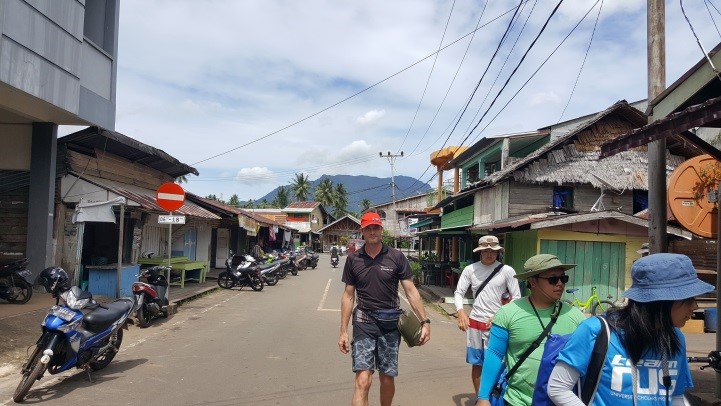
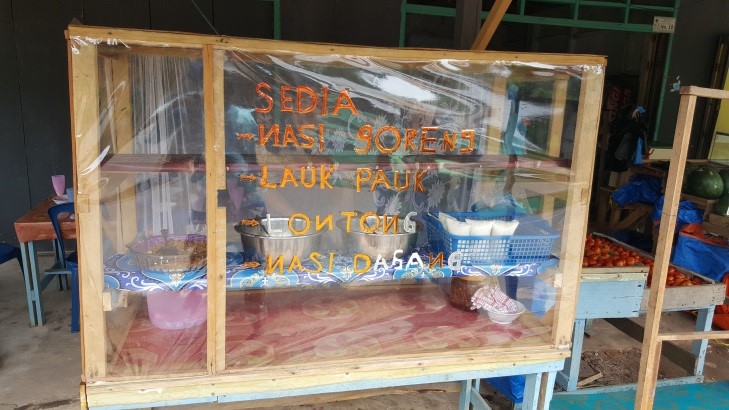
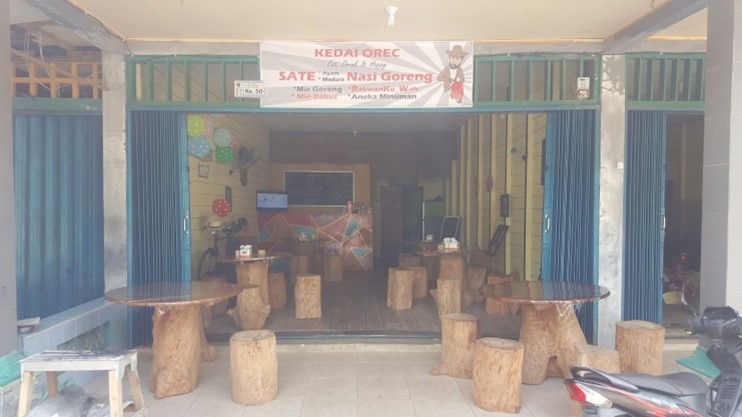
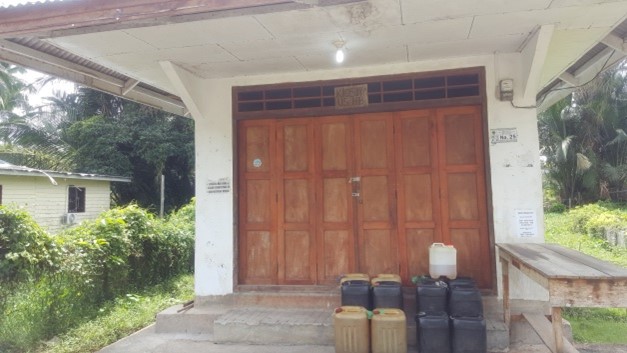
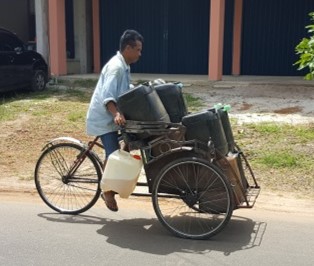
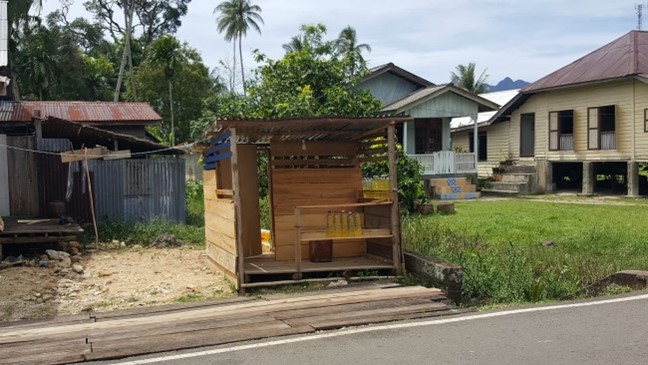
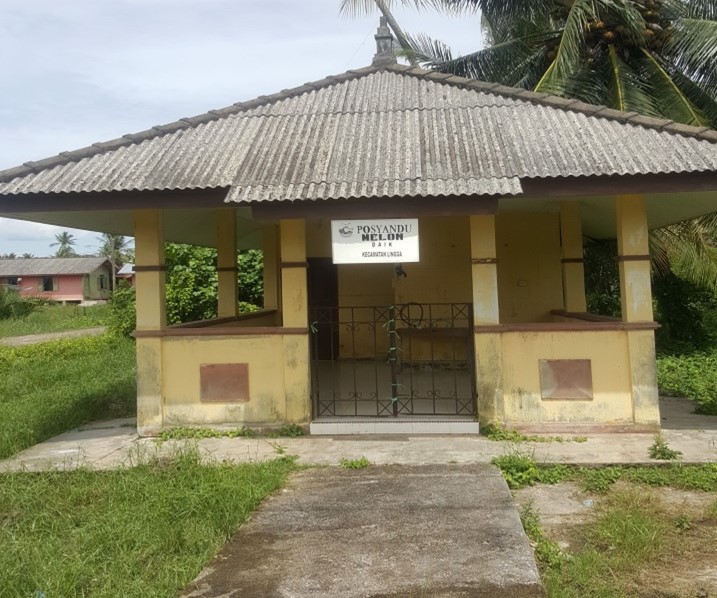


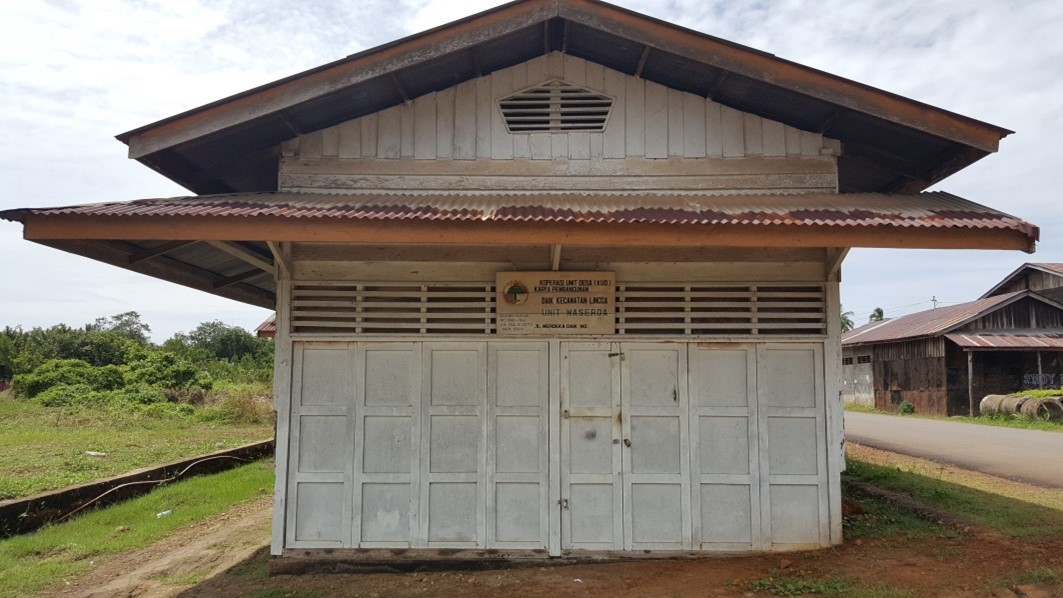
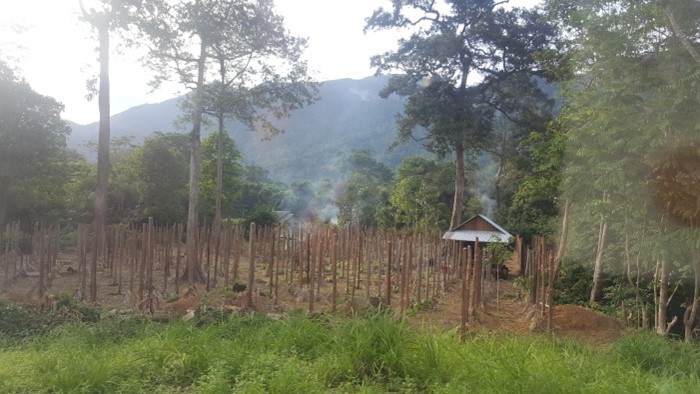
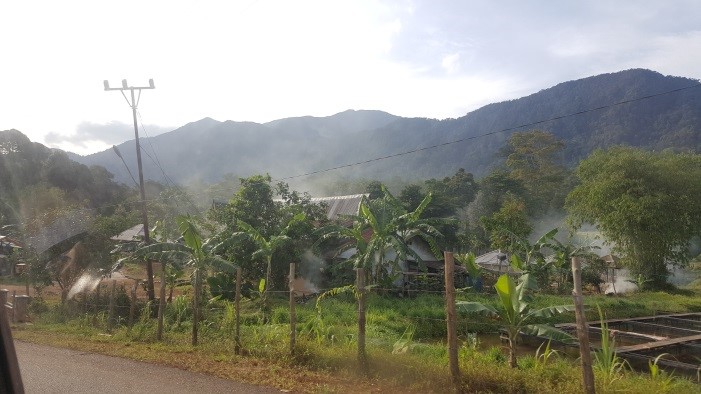
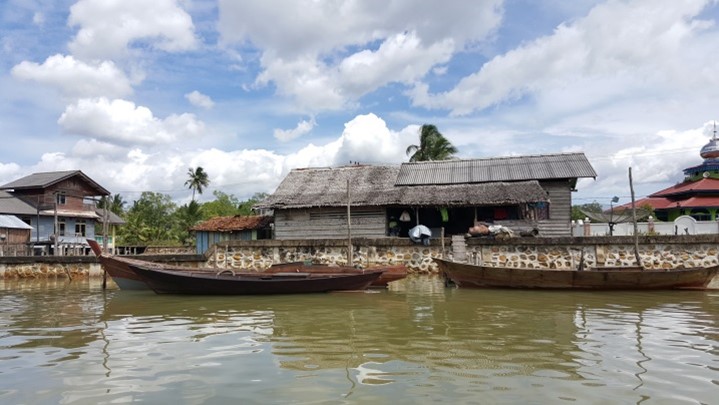

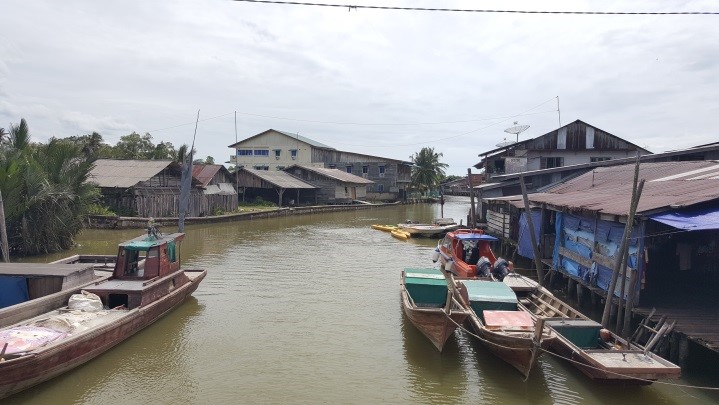
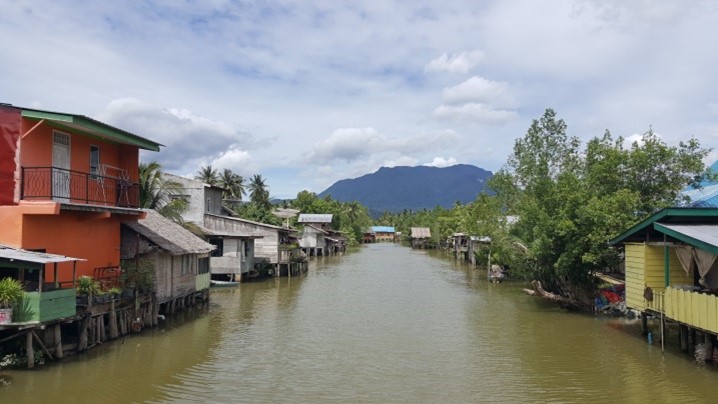
On the other hand, Gojong island was a small island containing 15 families (Figure 5), as our interlocutor revealed. One could stroll around the island’s perimeter in 20 minutes. There were no mosques or shops on the island. All the males on the island were fishermen (Figure 5), and typically headed out to fish twice a day – in the morning till lunchtime, and in the mid afternoon till evening. The locals also harvested coconuts from the trees, although we did not ascertain if the coconuts were for subsistence or export. Once a day, a ship would dock at the island, and the fishermen would sell their catch to this ship. According to our interlocutor, the fishermen obtain their necessities from another island nearby, but typically only go to the island once a month. Since the island has no schools, the children are homeschooled. Gojong island is not accessible by ferry and the locals on the island have their own boats.
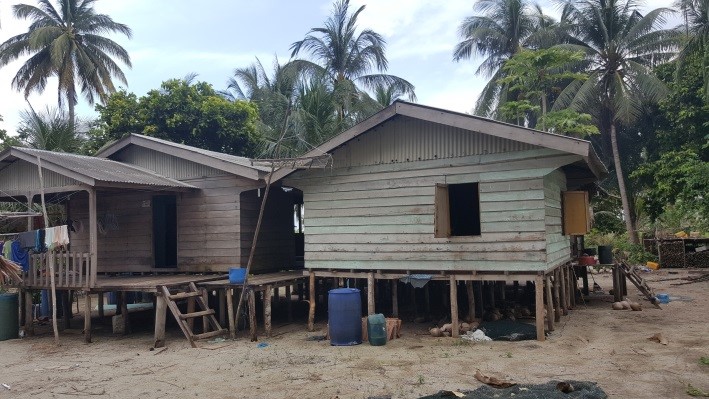
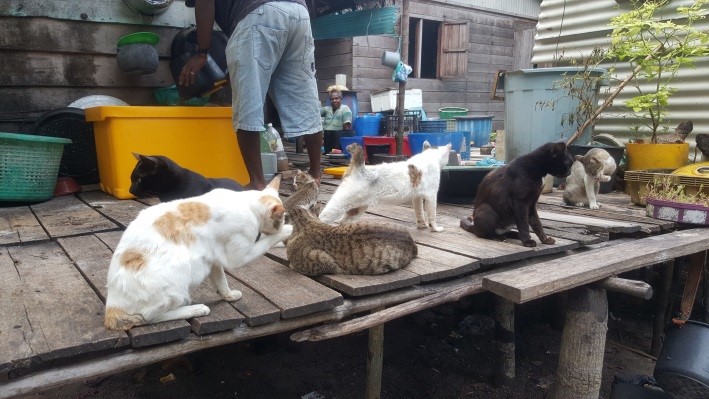
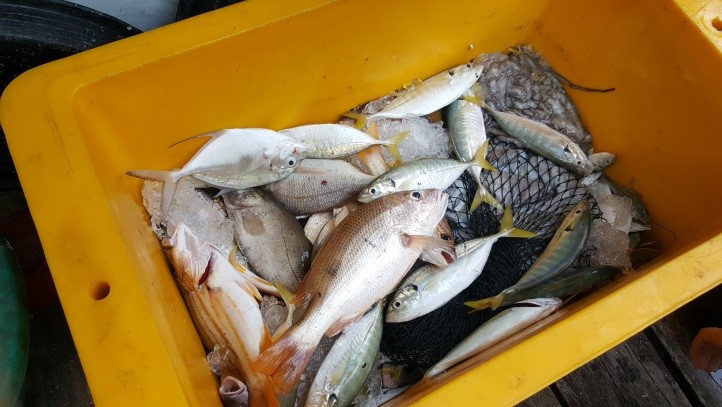
The socio-economic conditions of both communities provide an interesting contrast to that at Batam, where various socio-economic issues such as a widening income gap and the shame of sex work have surfaced, due to the intersection between transnational corporations and migration, in the context of globalization (DER, 2006). The islands in this region are especially significant for research because these islands can be seen as part of the economic sub-regional Singapore-Johor-Riau (SIJORI) growth triangle.
We managed to obtain this information through observing and conversing with the locals. Most of the time, our conversation was in the Indonesian language, and at times, in Mandarin. Although the required language skills and short time frame at these islands might make doing research challenging, our short visit has shown that it is possible. A longer stay would certainly yield more respondents and a deeper understanding of the socio-economic conditions. In a broad overview, some of the themes we identified from the ground included urban-rural and rural-urban migration, identity politics, and architectural styles.
Familiarization with historical and cultural aspects in Singapore’s immediate neighborhood
Today, Lingga island is part of the Riau Islands Province, which was split off from Riau Province in 2002. Yet, the name ‘Riau’ does not denote a place with unchanging geographical boundaries, but is rather a reference for different political realities shaped by different powers in asymmetrical power relations in different time periods (Wee and Chou, 1997:528-532). Originally as a reference to the Malacca-derived dynasty in the late 17th century, the name ‘Riau’ has signified many political realities (Ibid:532), including the establishment of rival trade ports in Penang and Singapore pushing Riau into a gradual decline in the early 19th century (Barnard, 2001), the partitioning of Riau into two spheres with southern Riau coming under the rule of a disgruntled group of Malay royalty based on Lingga island (Miksic, 2013:368), and the subsequent liquidation of the Riau-Lingga sultanate by the Dutch (Al Azhar, 1997: 767). The decline of Riau not only resulted in economic impacts, but also in self-confidence in the collective identity among the Malays of Riau (Ibid:768). Today the ports in the Strait of Malacca area, such as Pasir Panjang in Singapore and Tanjung Pelepas in Malaysia, continue to jostle for a slice of the maritime trade through the straits, and economic growth triangles such as SIJORI accentuate power relations.
During our short time at Lingga island, we witnessed brief glimpses into the island’s past (Figure 6), such as a fort with cannons, a road name which can be roughly translated as ‘Honorary Admiral Road’ (Jalan Datuk Laksemana), a building name which can be roughly translated as ‘Honorary Admiral House’ (Rumah Datuk Laksemana). We also noted a Chinese temple.
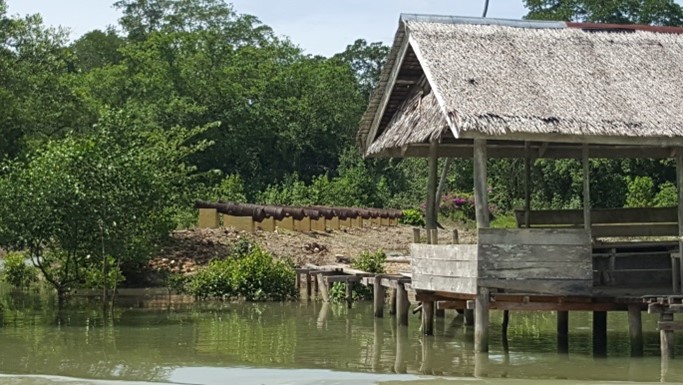
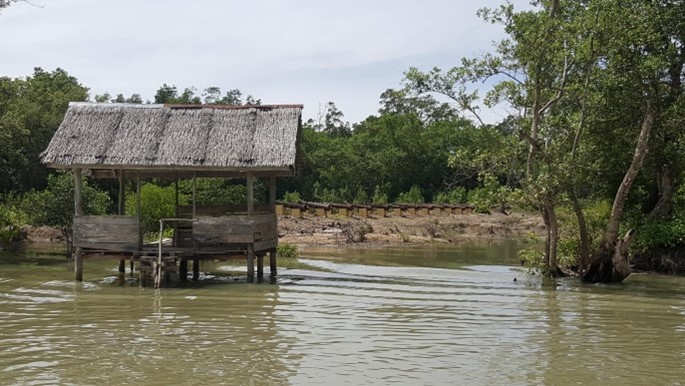
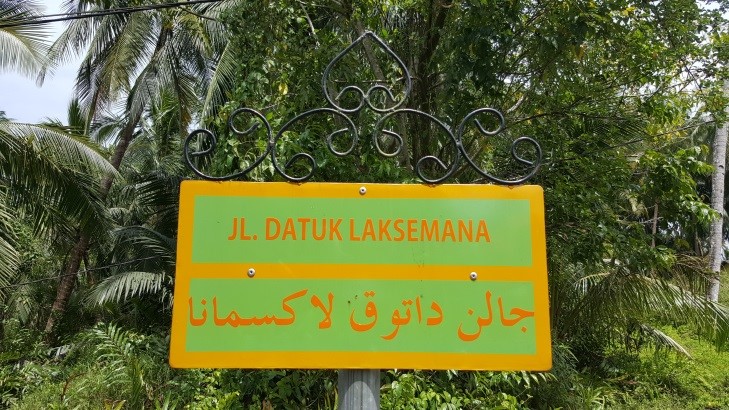
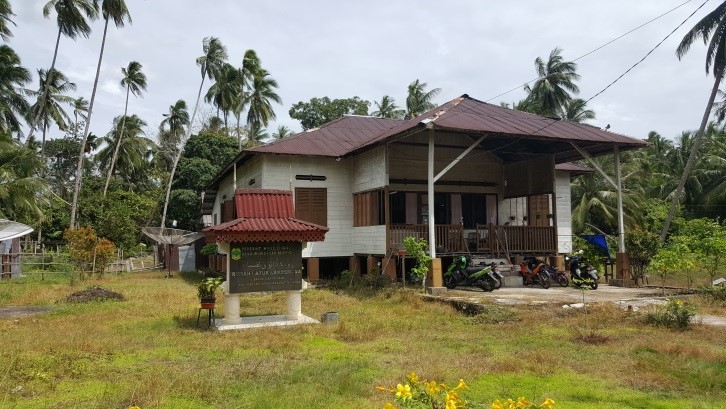
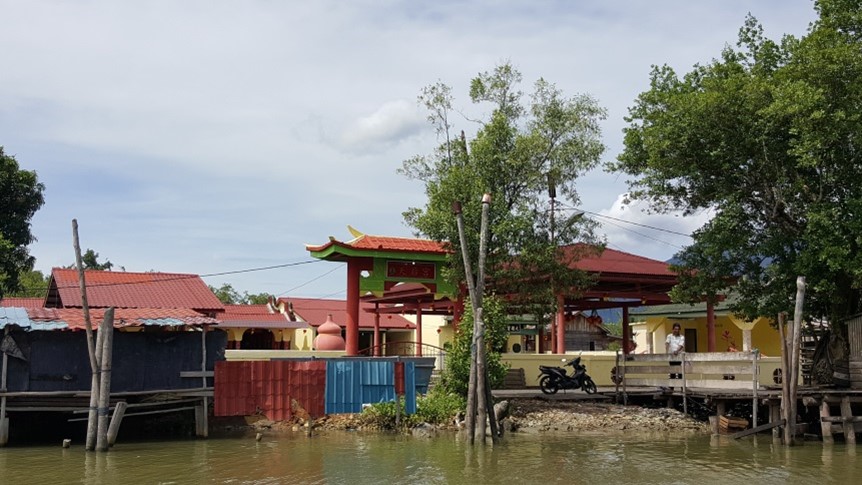
Although Dr. Miksic had suggested a list of sites of historical significance we could visit, it was challenging to locate these sites in the short time we were there. However, a trip with a longer duration should not encounter much problem. Some of the other sites suggested by Dr. Miksic include the Damanah palace, the water village of Pancur, the Makam Merah grave, the Bukit Cengkeh graveyard, and the Said Hamid collection of royal regalia on Lingga island, the remains of old tin mines on Singkep island, Tanjong Pinang and Penyengat on Bintan island, ancient ports such as Muara Jambi on the Batanghari and Palembang on the Musi river in Sumatra, the Merbok Estuary in Kedah, Phuket and Takuapa in South Thailand etc. These sites can be viewed as part of a wider maritime network connecting Riau to Chinese and Arabic traders (Miksic, 2013:369), and the Riau archipelago was a vast hinterland for 14th century Singapore (Ibid:388). Collectively, archaeological research and field visits to these sites, some of which have barely been explored, could shed light on the temporal dimension of the multi-faceted connections between the islands in Singapore’s immediate neighborhood.
Communicating using the Indonesian language
This voyage also provided an opportunity to learn and practice the Indonesian language. Another participant and I had learnt the Indonesian language at NUS. Employing our language skills, we were able to ask for directions, buy produce from the market, and make small talk about with our interlocutors. We also spoke in Indonesian to buy fresh squid from a fisherman on Gojong island, who kindly gave us several coconuts too (Figure 7). We also created a list of what we anticipated would be frequently used words in the Indonesian language, and shared it with the fellow participants. The list is attached with this report. Southeast Asian Studies as an area studies emphasizes the importance of acquiring a Southeast Asian language, and such a voyage would present an excellent opportunity to immerse oneself in the language on a daily basis.
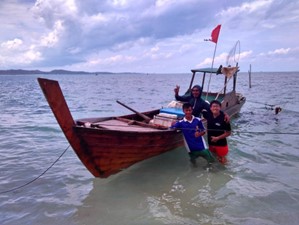
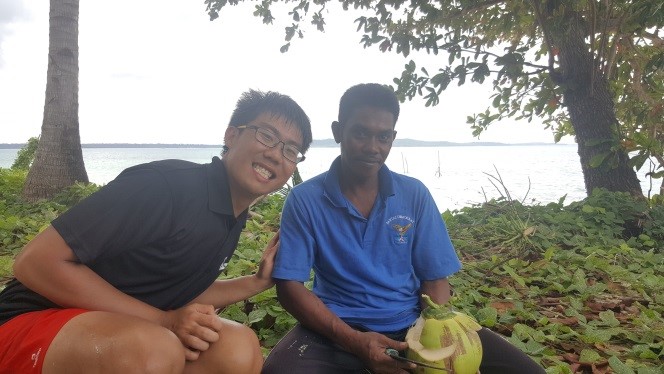
The significance of the seas in everyday life
Perhaps the last unifying theme that struck me, on hindsight, was the significance of the seas in everyday life. The narrative of Southeast Asia in general, and Indonesia in particular, is one closely tied to coastal settlements, due to physical barriers such as forests and mountains making land largely inaccessible. With coastal settlements came trade, local leaders who embodied charisma sought to exert influence on populations, subsequently localized religious practices, and the development of larger settlements embedded in patron-client relationships. Today, the sea remains not just a source of economic growth in the sense of transshipment hubs, bunkering, and fishing, but also remains a potential source of tension between nation-states. During our trip, we observed and experienced how communities at Nongsa marina, Daik town, and Gojong island are still intertwined with the sea in myriad ways (Figure 8), including fishing, stilt-house architecture, the extraction of natural gas, and the transport of goods, people, and ideas, amidst a backdrop of the global economy.
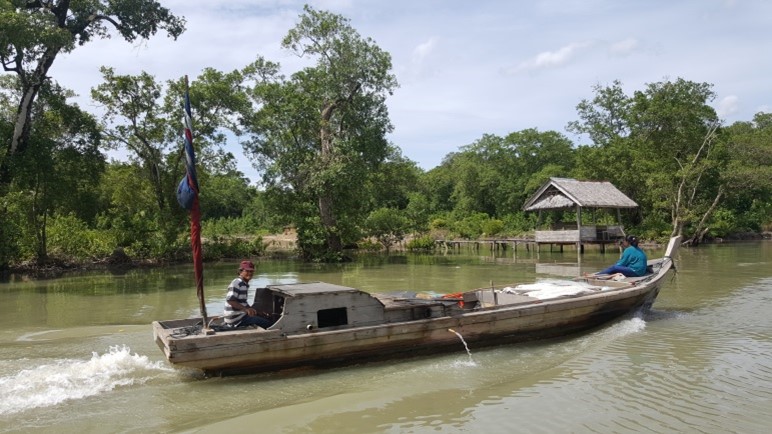
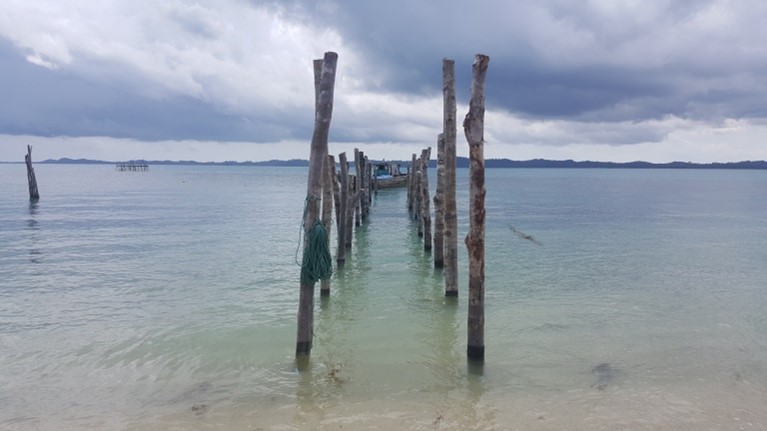
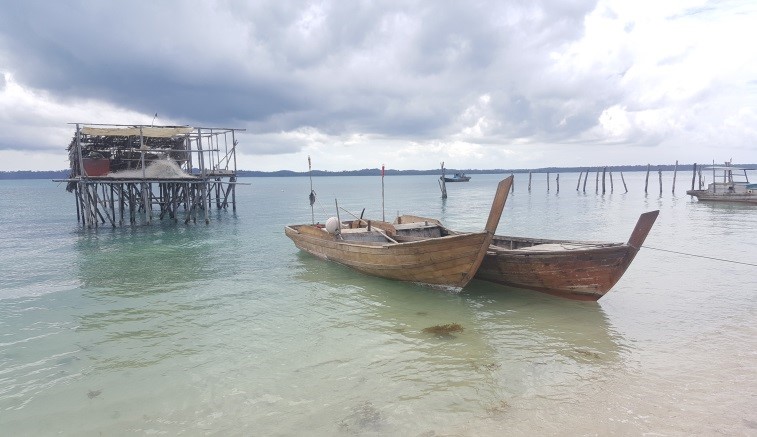
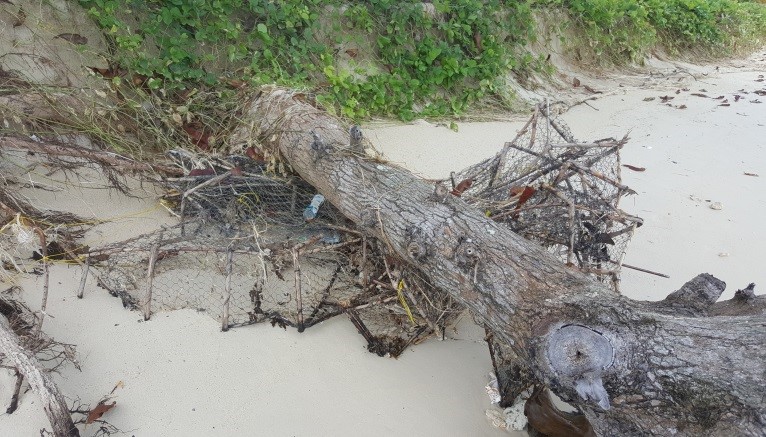
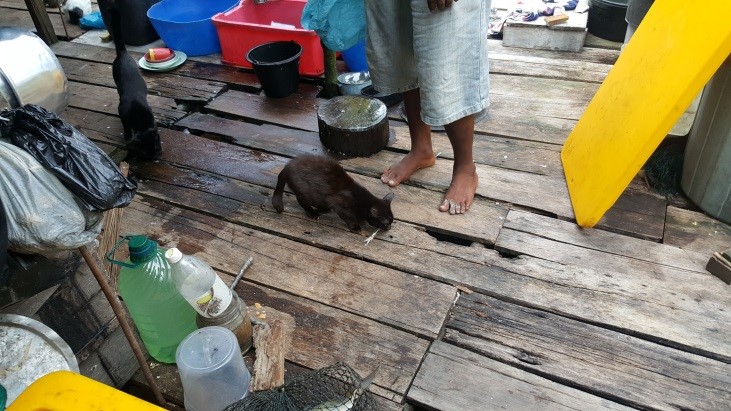
This is where experiencing life on the seas through a sailing voyage would be a critical element in learning about the significance of the seas in the everyday lives of local communities. While it could be argued that all the activities conducted above could be done on land, or at most, using the boat as a point of transportation to get to islands without regular ferry service, in contrast, experiencing life on the seas through a sailing voyage could add value by allowing the students to think from a perspective of someone living on the seas. In contrast to travelling by air or land, travelling by boat from island to island and river mouth to upriver allows for a point of view closer with that of the locals, or whom the river is a fact of daily life. For instance, accessibility, navigation, foul weather such as Sumatra squalls, the need to ration supplies of fresh water and electricity, as well as the importance of keeping a lookout and being situationally aware are essential when on a boat. This would allow the students a more holistic experience when learning about the significance of the seas to such coastal communities.
Possible future projects in relation to Southeast Asian Studies
Future voyages could cover research and teaching in the following areas:
-
Interactions between sea-faring communities and the sea (GES1030 Singapore and the Sea / SE4226 Doing Ethnography in Southeast Asia)
Participant observation can be undertaken during the voyage with any of the many diverse sea-faring communities in Southeast Asia, which may include orang laut, fishermen, or other boat operators. The captain of the boat we used for the pilot voyage had written a short piece based on his interactions with orang laut in the past.
-
Popular culture and the sea (GES1030 Singapore and the Sea / SE2210 Popular Culture in Southeast Asia)
The sea has its own myths and legends, from King Neptune to the Queen of the South Seas. The sea and the coast is also mentioned in various songs and poems, such as that of ‘Di Tanjung Katong’. In that song, references are made to Mount Daik, Pandan island, and blue waters. It would be interesting to explore more connections between popular culture and the sea.
-
Exploring Singapore’s islands / Syncretisation of religion (GES1030 Singapore and the Sea / GEK1045 World Religions)
Singapore used to have many more islands. Today, the former inhabitants have been located to mainland Singapore, and some of these islands have been reclaimed into bigger islands. Yet, these islands continue to attract day visitors for various reasons, one of which is the annual pilgrimage during the ninth lunar month when many devotees visit both the temple and the keramat on Kusu island. This demonstrates not just the localization and syncretisation of religious practises, but also reminds one that these islands are often sites for stories and legends. Commercial ferries plying routes to Singapore’s southern islands are expensive and ply triangular routings. Exploring these destinations on an NUS boat would allow for flexibility in scheduling the voyage, and could result in a competitive rate when compared to purchasing commercial ferry tickets.
-
Cultural heritage sites in Southeast Asia (SE3214 Marketing Southeast Asia’s Heritage / SE5263 Cultural Resource Management in Southeast Asia)
Southeast Asia’s has a wide diversity of cultural heritage sites, such as those mentioned on Lingga island. Some of these sites such as the Pulau Tujuh islands in eastern Riau have barely been explored (Miksic, 2013:380), even though they are near to Singapore. A voyage would allow for these sites to be thoroughly explored at the class’s schedule.
-
Refugees, including ‘boat peoples’ (SE3216 Migration and Diaspora in Southeast Asia)
In Southeast Asia, the boat as a means of transport has been used by refugees fleeing South Vietnam in 1975, and Rohingya fleeing Burma even in recent years. While it would be almost impossible to interact with such refugees for the purpose of research, students can experience life on a boat and contrast it to life on land. Coupled with appropriate material and reflection, the trip could conclude with a visit to the former Galang Refugee Camp on Galang island, Southeast of Batam.
-
The exploitation of labour on fishing boats, especially in the Thai fishing industry (SE2223 Doing Research in Southeast Asia / SE3226 The Changing Face of Labour in Southeast Asia)
Such a voyage could be held in collaboration with NGOs. First, students experience life on a boat for several days, and reflect on the global production network of seafood. Second, NGO staff or the workers the NGO is working with could come onboard and share about their perspectives.
-
Ship-building in Southeast Asia
Boats sometimes have ‘eyes’ or ‘mermaids’ at the bow of the ship, as it is believed these would guide the ship’s path safely. Also, different types of ship designs can be observed, for instance, in the Philippine design with outriggers. In Terengganu, certain materials such as chengal wood were used for the hull of the boat due to its strength, and the boats were made without metal nails. The Austronesian-speaking peoples who migrated through Southeast Asia must have had vessels sturdy enough to support their voyages. Yet, not much is known about the craft of shipbuilding in Southeast Asia today.
-
Rural-Urban, Rural-Rural, and Urban-Rural Migration in the Riau archipelago (SE3216 Migration and Diaspora in Southeast Asia)
While Batam has attracted many migrants from other parts of Indonesia, and studies have been conducted on rural-urban migration in Batam, including the reasons, benefits, and problems of such migrations, migration to rural areas within the Riau islands have not been documented as extensively. Yet, two of our interlocutors have also been migrants moving into rural areas (one from elsewhere to the small island of Gojong, and another from Bintan island to Lingga island), indicating that this may be a common theme. Do fishermen migrate, and to what extent are they tied to a specific place?
Personal reflections on the pilot voyage
In contrast to my experience as a passenger on larger ships, being part of the student team onboard boat the size of ‘Four Friends’ has deepened my appreciation of the teamwork, resourcefulness, and joy of being a seafarer.
First, being a small group on board, it was all hands on deck when things needed to be done, such as the hoisting of sails, the preparation of food, or the doing of dishes. Since I was not good at tying knots, I felt relieved that I could help out in conversations with the locals, such as during the trip to the market. This was where my language skills as a Southeast Asian Studies major proved useful. Having said that, one lesson I took away from this trip was that people with different talents and skills were needed onboard to ensure a smooth voyage. This could also apply to academic pursuits, where a multi-disciplinary team would be able to bring together diverse strengths, and learning would require an interdisciplinary mindset and approach.
Second, I am in awe of the resourcefulness of ancient seafarers in reading the positions of the stars and planets in order to navigate to their destination, and how the local fishing boats could navigate in the darkness of night. Living on a board a vessel also posed certain challenges and impediments, such as the need for conserving our use of fresh water when bathing, and being woken up by a storm in the middle of the night on quite a few occasions. These are experiences I would not have had if I had travelled by air and stayed on land, instead of out in a boat on water.
Finally, I thoroughly enjoyed my time on board. This voyage was to me, a call to adventure, discovering new perspectives and getting intimate with the sea instead of the land. It was a voyage into unfamiliarity. Yet, I enjoyed the calmness of the sea and the warmth of the locals we met on the islands. This trip is definitely a highlight of my journey at NUS.
Bibliography
Al Azhar. “Malayness in Riau; The study and revitalization of identity”. Bijdragen tot de Taal-, Land- en Volkenkunde, Riau in transition 153, no. 4 (1997): 764-773.
Barnard, Timothy P. “Rules for Rulers: Obscure Texts, Authority, and Policing in Two Malay States”. Journal of Southeast Asian Studies 32, no. 2 (2001): 211-225.
Faucher, Carole. “Magical Discourse, Moral Boundaries, and the Mapping of Interrelations in the Riau Archipelago”. Asian Journal of Social Science 30, no. 1, Special Focus: Southeast Asian Urban Futures (2002): 158-176.
Miksic, John N. Singapore and the Silk Road of the Sea 1300-1800. Singapore: NUS Press, 2013.
Wee, Vivienne, and Chou, Cynthia. “Continuity and Discontinuity in the Multiple Realities of Riau”. Bijdragen tot de Taal-, Land- en Volkenkunde, Riau in transition 153, no. 4 (1997): 527-541.